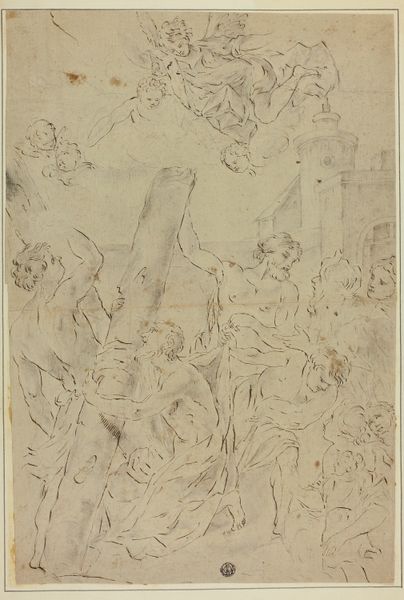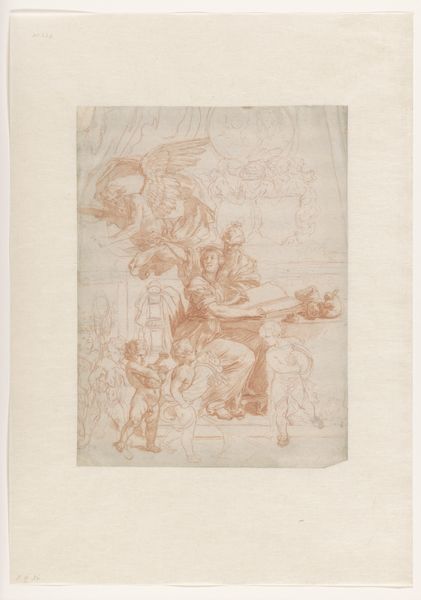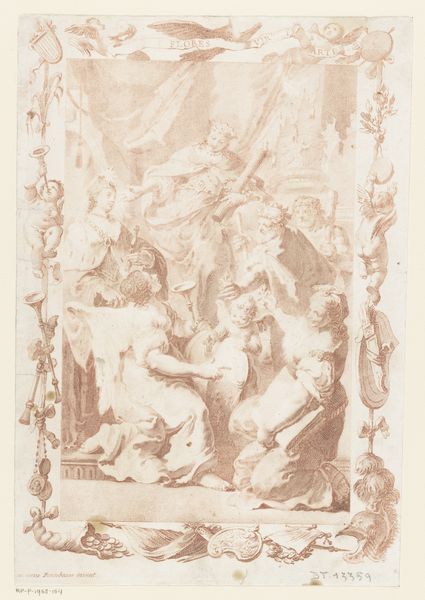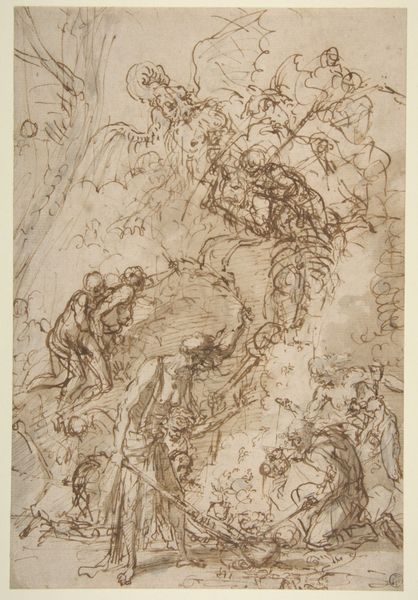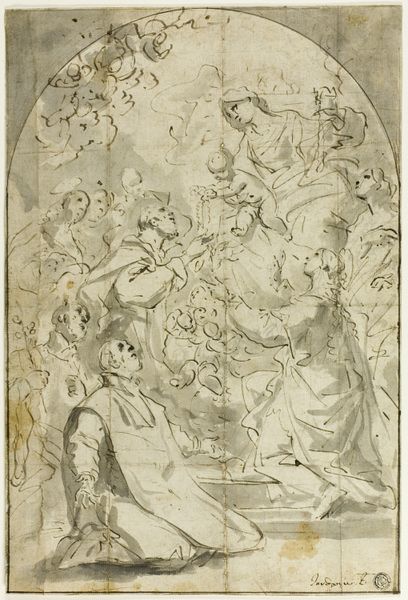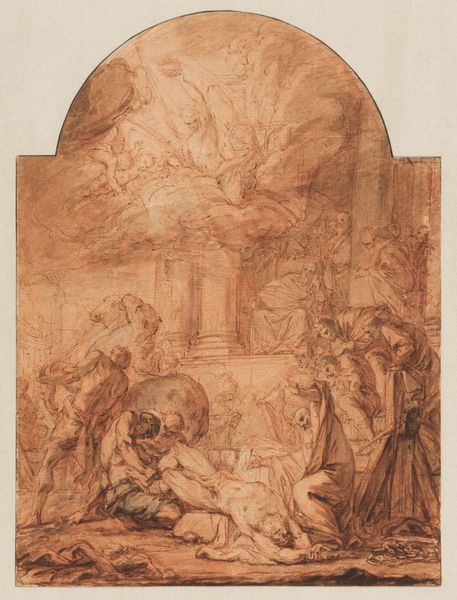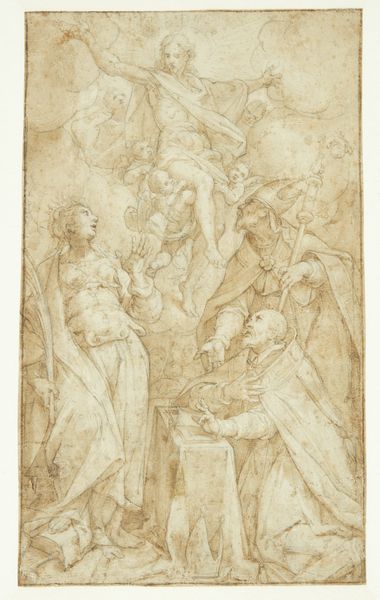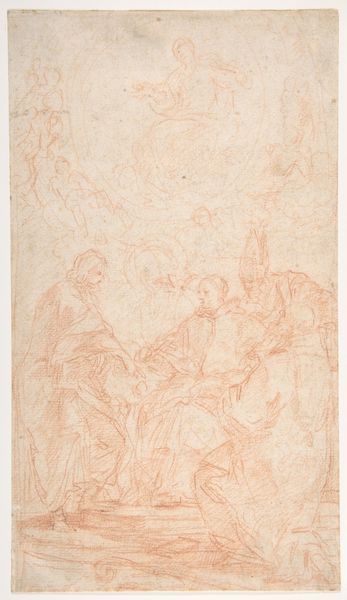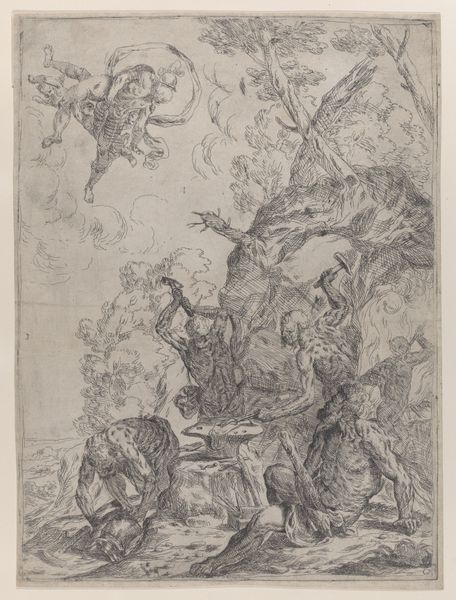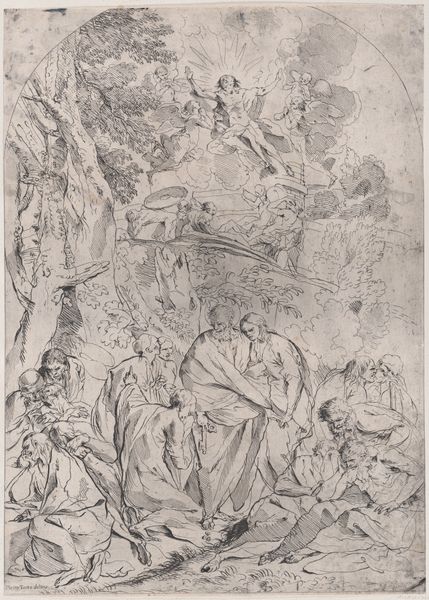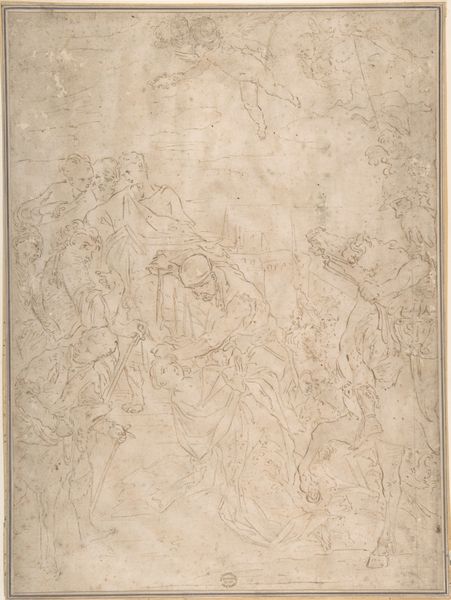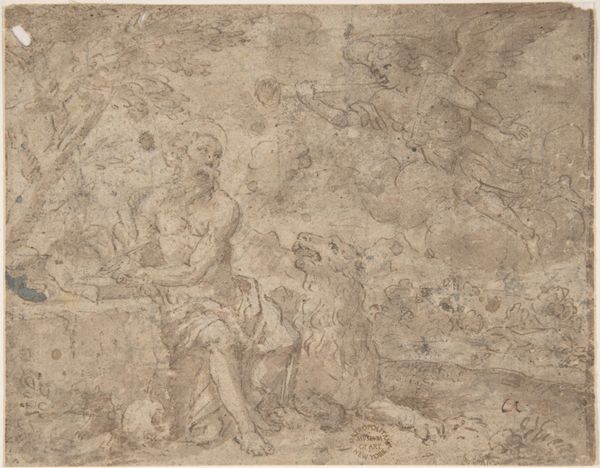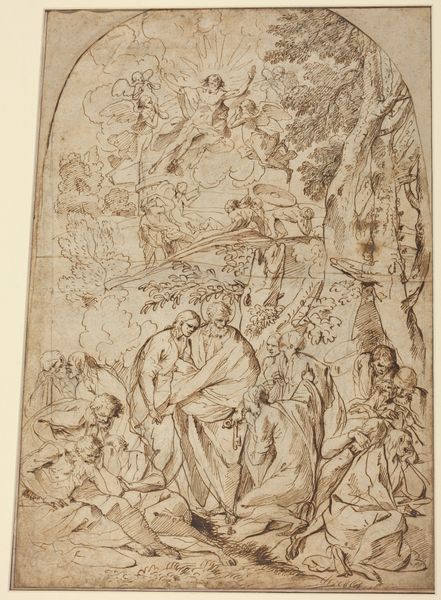
Dimensions: height 212 mm, width 165 mm
Copyright: Rijks Museum: Open Domain
Curator: Oh, it's like a dream pulled straight from a fevered Baroque imagination! What do you make of this print, "The Adoration of the Shepherds" by Gaetano Gandolfi? It’s an etching, dating back to 1768-69. Editor: First impression? Energetic. Look at the sheer busyness of it all, the layering. But also, you know, affordable. Prints allowed for wider distribution, making art more accessible. This wasn't some exclusive oil painting for a wealthy patron. It’s for mass consumption! Curator: Accessible awe! Exactly. The scene positively teems with devotion. Mary and the Christ Child are, naturally, at the center, radiating this quiet serenity amid a swirling crowd of angels and shepherds. There's almost a frantic energy in their poses, reaching, kneeling...it's as though they can barely contain their wonder. Editor: And it’s interesting to think about the materiality, too. Etching allowed Gandolfi to reproduce this image many times over, using relatively inexpensive materials, like copper plates and paper. Who owned the plates? How were these prints sold and distributed? What labor was involved in the entire process? It speaks to a specific moment in art production. Curator: I get lost in the lines themselves, don’t you? That sepia tone, the way he uses cross-hatching to build form, it feels almost sculptural despite being so fluid and loose. You can almost sense Gandolfi wrestling with the plate, chasing the light... Editor: Right, because it's an indirect process, of course. Gandolfi's drawing wouldn't be made directly on the print, but translated from the original plate to a print—lots of technical expertise and craft know-how behind what seems spontaneous. Each line, deeply considered in how it relates to process. Curator: It definitely is worth a ponder or two! For me, it's a gorgeous reminder that even grand religious scenes can hold such personal, intimate moments. Editor: And seeing those grand scenes circulating at a fraction of the price as an oil painting. To know a broader audience could own an “original” copy brings the work closer to everyday life—in a very material way.
Comments
No comments
Be the first to comment and join the conversation on the ultimate creative platform.
